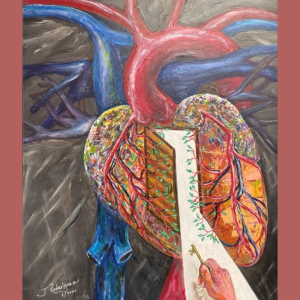Why should patients focus on Peripheral Vascular Disease?
Beyond the Heart:
Why Patients Should Focus on Peripheral Vascular Disease. When it comes to cardiovascular health, heart disease often takes the spotlight. However, there is another crucial condition that deserves our attention: Peripheral Vascular Disease (PVD). While heart disease affects the arteries supplying blood to the heart, PVD affects the arteries outside the heart, particularly those that supply blood to the limbs. It’s important for patients to understand the significance of PVD and why it should be on their radar alongside heart disease. In this blog post, we will explore the reasons why patients should focus on PVD in addition to heart disease.
Prevalence and Risk Factors:
PVD is more common than many people realize. It affects millions of individuals worldwide, particularly those over the age of 50. The risk factors for PVD overlap with those of heart disease, including smoking, diabetes, high blood pressure, high cholesterol, obesity, and a sedentary lifestyle. By focusing on PVD, patients can address these risk factors and make positive changes to improve their overall vascular health.
Impact on Quality of Life:
Peripheral Vascular Disease can significantly impact a patient’s quality of life. The reduced blood flow to the limbs can cause symptoms such as leg pain, cramping, numbness, and weakness. These symptoms can make it difficult to walk, engage in physical activities, and carry out daily tasks. By addressing PVD, patients can seek appropriate treatment to alleviate these symptoms and regain their mobility and independence.
Increased Risk of Cardiovascular Events:
PVD is not an isolated condition. It is associated with a higher risk of cardiovascular events, such as heart attacks and strokes. The same underlying process of atherosclerosis, the buildup of plaque in the arteries, occurs in both PVD and heart disease. By managing PVD and its risk factors, patients can potentially reduce their overall cardiovascular risk and improve their long-term health outcomes.
Early Detection and Prevention:
Detecting PVD at an early stage is crucial for effective management. Unfortunately, PVD often goes undiagnosed or overlooked due to its subtle symptoms. However, routine screenings and awareness can lead to early detection and intervention. By focusing on PVD, patients can work closely with their healthcare providers to identify the condition early, initiate appropriate treatments, and prevent its progression.
Holistic Approach to Vascular Health:
Taking a comprehensive approach to vascular health means addressing both heart disease and PVD. By understanding the connections between the two and recognizing the importance of overall vascular wellness, patients can adopt a proactive mindset. This includes making lifestyle modifications, such as quitting smoking, adopting a heart-healthy diet, managing blood pressure and cholesterol levels, and engaging in regular physical activity. It’s about viewing the body’s entire vascular system as interconnected and deserves equal attention.
Peripheral Vascular Disease should not be overlooked or overshadowed by heart disease. By focusing on PVD alongside heart health, patients can proactively manage their vascular well-being, improve their quality of life, and reduce their risk of cardiovascular events. Awareness, early detection, and a comprehensive approach to vascular health are essential for optimal long-term outcomes. Remember, your limbs deserve the same level of care as your heart. Take action today for a healthier vascular future.
References:
Society for Vascular Surgery: Peripheral Artery Disease (PAD)
Western Vascular Institute: What Is Peripheral Arterial Disease?
Mayo Clinic: Peripheral artery disease (PAD)























